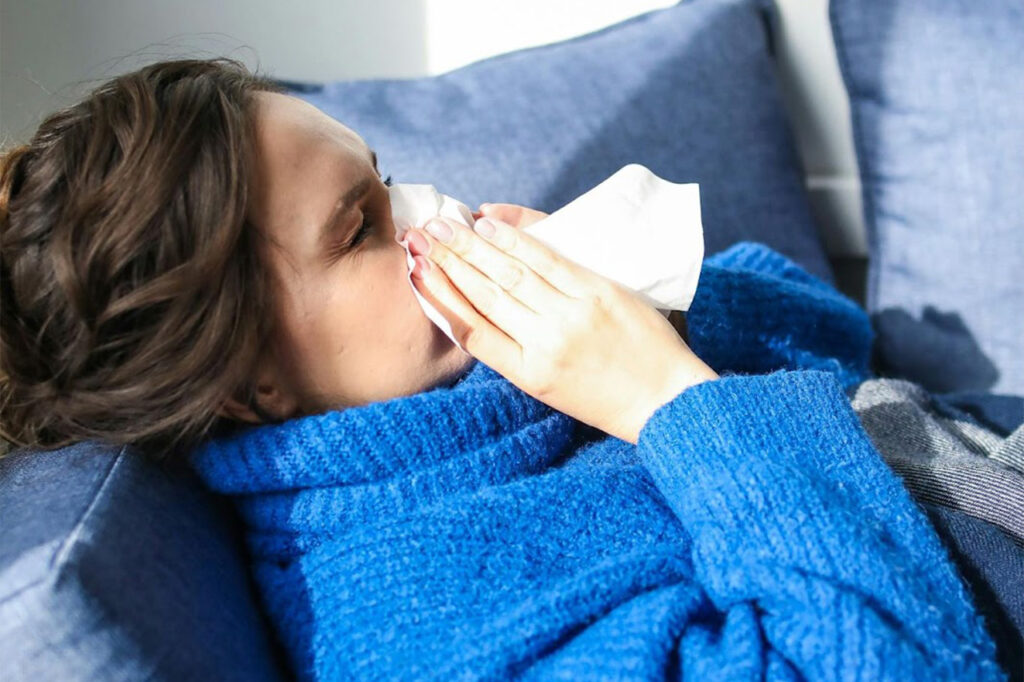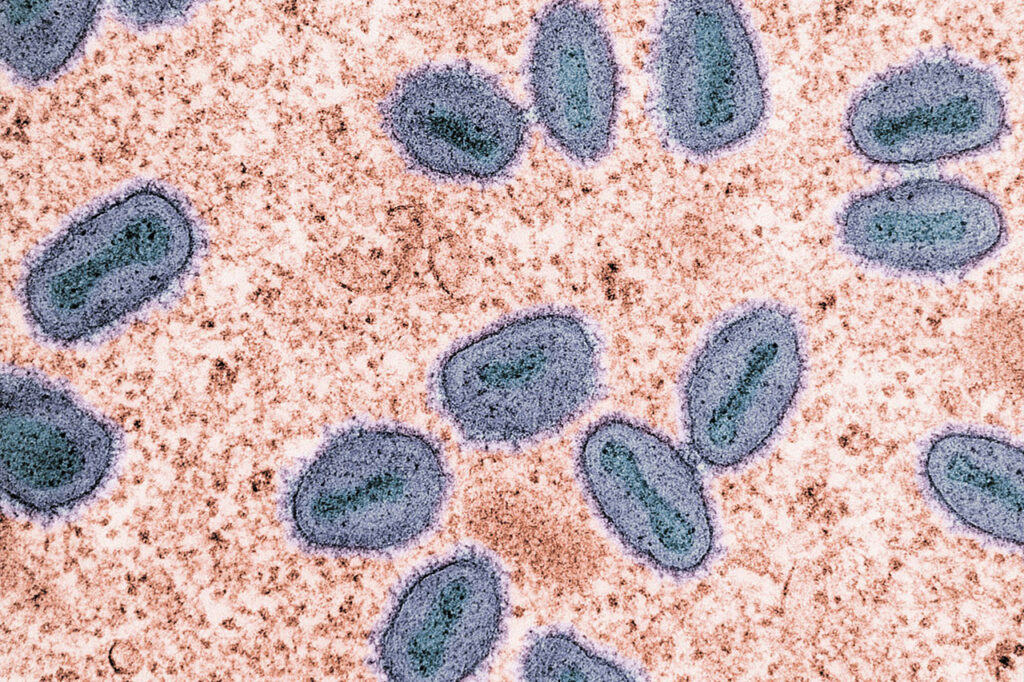Mpox, formerly known as monkeypox, is a viral infection affecting Australia, primarily impacting GBMSM. You’ll recognise symptoms like fever, swollen lymph nodes, and a distinctive rash resembling chicken pox but with larger lesions.
The virus spreads through close contact, especially during intimate activities. If you suspect infection, seek urgent medical attention for PCR testing. Treatment focuses on managing symptoms, with most people recovering in 2-4 weeks. Self-isolation is essential until all lesions heal.
What is Mpox?
Mpox, formerly known as monkeypox, has been primarily affecting gay, bisexual, and other men who’ve sex with men (GBMSM) since May 2022. The outbreak is linked to the Clade IIb variant, which has spread across the country.
In Australia, healthcare providers confirm mpox diagnosis through PCR testing of rash swabs. If you’re presenting with a rash and flu-like symptoms, especially if you have a recent exposure history, your doctor may consider testing for mpox.
Current Mpox Cases in Australia

As of September 20, 2024, the National Notifiable Diseases Surveillance System (NNDSS) reports a total of 635 confirmed mpox cases in Australia. The distribution of cases across states and territories is as follows:
- New South Wales (NSW): 337
- Victoria (VIC): 224
- Queensland (QLD): 51
- Australian Capital Territory (ACT): 14
- South Australia (SA): 6
- Western Australia (WA): 2
- Northern Territory (NT): 1
- Tasmania (TAS): 0
The total number of cases across Australia stands at 635. New South Wales and Victoria have reported the highest number of cases, accounting for over 88% of all confirmed infections in the country.
The age group most affected by mpox in Australia is 30-34 years old, with 167 confirmed cases. This trend aligns with global observations that mpox primarily affects young to middle-aged adults.
It’s important to note that these numbers are subject to change as new cases are identified and reported. Health authorities continue to monitor the situation closely, emphasising the importance of awareness, prevention measures, and early detection to control the spread of mpox across the country.
Transmission and Risk Factors of Mpox
Mpox transmission routes are essential to understand for effective prevention. The virus spreads primarily through close contact with infected individuals, particularly during intimate physical activities.
You’re at risk if you come into direct contact with rashes, body fluids, or contaminated objects of an infected person. The infectious period begins when symptoms appear and lasts until all scabs have healed and new skin has formed, which can take several weeks.
While respiratory droplets can transmit the virus, this method requires prolonged face-to-face contact and is less common than skin-to-skin transmission.
You’re at higher risk of infection if you:
- Have close physical contact with mpox cases
- Are a healthcare worker caring for infected patients
- Are a sexual partner of an infected individual
Certain groups face an increased risk of severe illness from mpox:
- Infants and young children
- Pregnant women
- Immunocompromised individuals
To protect yourself, avoid close contact with infected individuals, practise good hygiene, and use personal protective equipment if you’re a healthcare worker.
Recognising Mpox Symptoms

When symptoms of mpox first appear, you might mistake them for a common flu. You’ll likely experience fever, headache, muscle aches, chills, and exhaustion. These initial symptoms can manifest anywhere from 5 to 21 days after exposure to the virus.
However, a distinguishing feature of mpox is the presence of swollen lymph nodes, which isn’t typically seen in smallpox.
Within 1 to 3 days after the onset of fever, you’ll notice a characteristic rash developing. This rash often starts in the genital area and can cause rectal pain. It progresses through several stages: macules, papules, vesicles, and finally, pustules.
The rash lesions can vary in size and number, resembling chickenpox but generally larger. You may find these lesions spreading to your face, extremities, and other body parts.
It’s important to note that symptoms usually last between 2 to 4 weeks. If you’re pregnant, immunocompromised, or have young children, be aware that you’re at higher risk for severe complications.
Diagnosis and Medical Attention
How can you be sure it’s mpox? Definitive diagnosis requires laboratory testing, primarily using PCR tests on samples from your lesions. Serological methods may also be used to detect the virus or antibodies.
If you’re experiencing symptoms like fever, swollen lymph nodes, and a distinctive rash that progresses through stages, it’s essential to seek urgent medical attention.
When you visit a healthcare provider, they’ll assess your symptoms and potential exposure. They may need to differentiate mpox from other conditions with similar presentations, such as chickenpox or herpes simplex. This is particularly important for vaccinated individuals who might show atypical symptoms.
Remember, early intervention is key to managing the disease effectively and preventing further transmission. If you’ve been exposed to mpox or are showing symptoms, don’t hesitate to contact your doctor immediately.
Accurate diagnosis is vital for initiating appropriate supportive care and protecting high-risk populations in Australia.
Your healthcare provider will guide you through the diagnostic process, which may include:
- Detailed medical history
- Physical examination
- Laboratory testing of lesion samples
- Serological tests for virus or antibody detection
Treatment Options and Care
In light of the mild nature of most mpox cases, treatment primarily focuses on managing symptoms and providing supportive care. You’ll typically recover within 2 to 4 weeks without specific medical interventions.
However, it’s important to self-isolate until all lesions have healed to prevent virus transmission.
For severe cases, your healthcare provider may consider antiviral medications like tecovirimat (TPOXX). Access to these treatments requires approval due to their limited availability.
If you develop secondary bacterial infections from skin lesions, you might be prescribed antibiotics to address these complications.
Treatment options include:
- Symptom management (e.g., pain relief, fever reduction)
- Supportive care to maintain hydration and nutrition
- Antiviral medications for severe cases (with approval)
- Antibiotics for secondary bacterial infections
Early diagnosis through laboratory testing is essential for effective management. It helps differentiate mpox from other similar illnesses and guides appropriate treatment decisions.
Your healthcare provider will determine the best course of action based on your individual case, symptoms, and overall health status.
Prevention and Vaccination Strategies
With effective treatment strategies in place, attention now turns to preventing mpox transmission. In Australia, vaccination is a key preventive measure for high-risk individuals. The JYNNEOS and ACAM2000 vaccines are recommended, with two doses given 28 days apart.
Post-exposure vaccination within 4 days of exposure is most effective in preventing mpox, with JYNNEOS being the preferred option due to its easier administration and fewer side effects.
While using condoms during sexual activity can help reduce risk, it’s essential to acknowledge that they may not fully prevent transmission.
The Department of Health and Aged Care in Australia provides multilingual resources and fact sheets on mpox vaccination and prevention strategies, targeting at-risk groups for vaccination.
Frequently Asked Questions
What Is the Treatment for Monkeypox?
You’ll mainly receive supportive care to manage symptoms and prevent complications. There’s no specific treatment, but antivirals like TPOXX may be used in severe cases. Self-isolation is crucial. Vaccination can help prevent infection in high-risk individuals.
What Should I Do if I Have Monkeypox Symptoms?
If you’ve got monkeypox symptoms, you should immediately contact your healthcare provider. Don’t wait! Isolate yourself, avoid close contact with others, and wear a mask. Seek testing and follow your doctor’s advice for treatment and care.
How Do You Recover From Monkeypox Fast?
To recover from monkeypox quickly, you’ll need rest, hydration, and symptom management. Isolate yourself, follow your doctor’s advice, and use over-the-counter pain relievers. Be patient, as recovery typically takes 2-4 weeks. Prioritise self-care and avoid spreading the virus.
What Are the Symptoms of Monkeypox Mpox?
You’ll likely experience flu-like symptoms first, including fever, chills, and muscle aches. Then, you’ll develop a painful rash that progresses through stages. You may also have swollen lymph nodes, headaches, and exhaustion.

